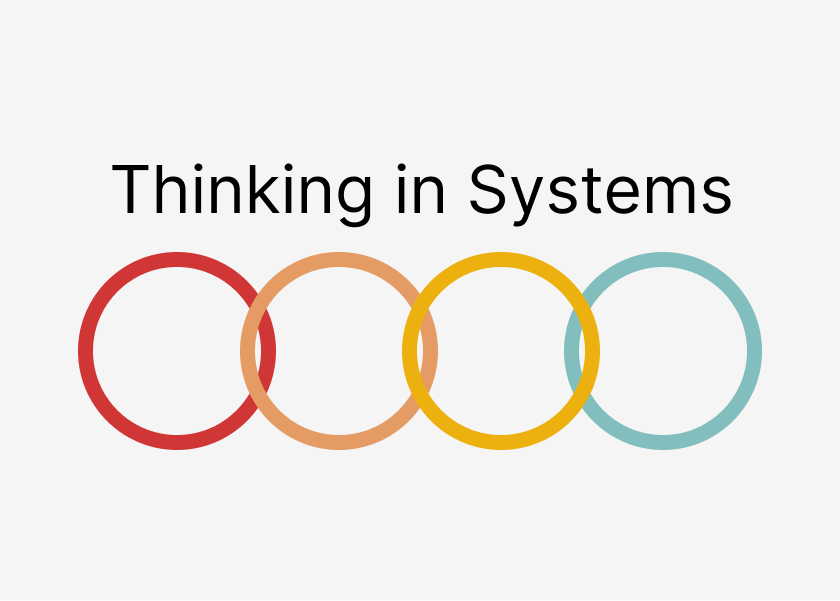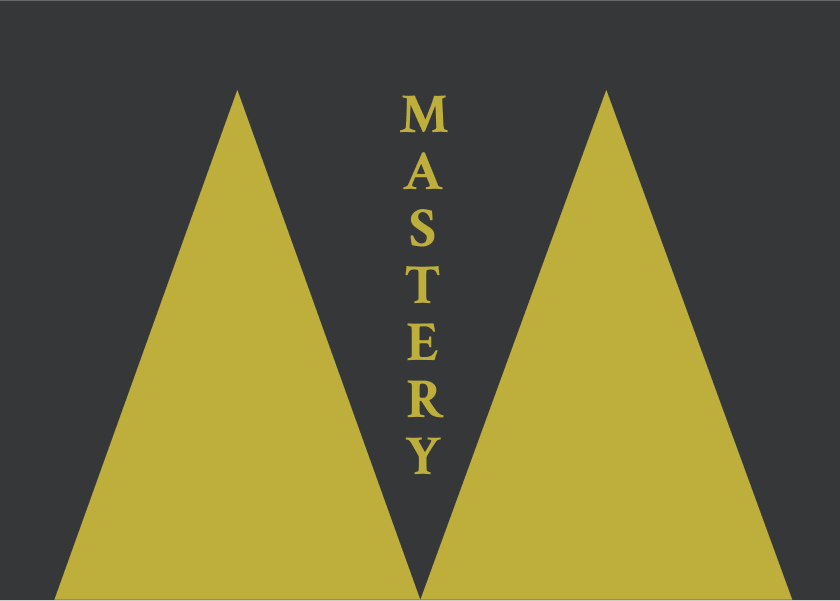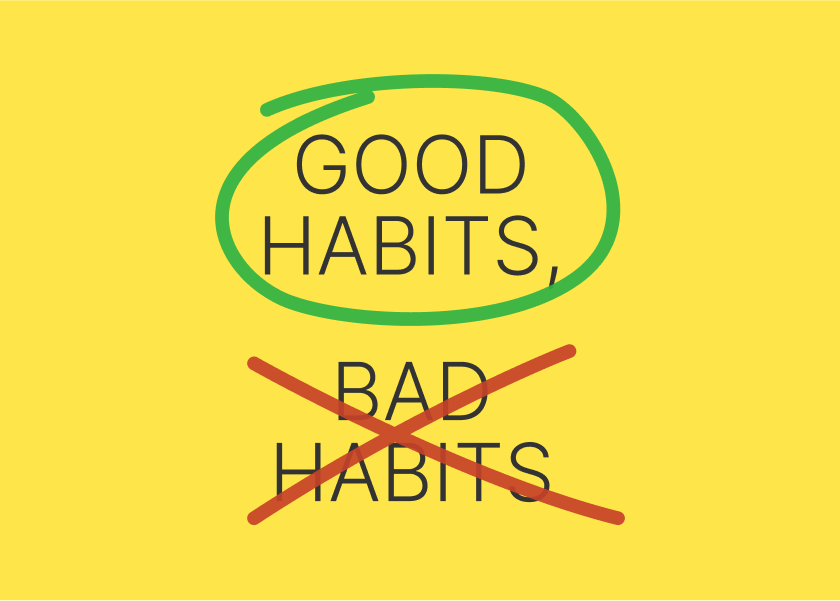Thinking in Systems by Donella Meadows - Summary
Understand our complex world by seeing the hidden structures driving events. Find leverage points for change, and move beyond simplistic solutions. Discover a powerful new way of thinking that helps you shape a better future.

The following is summary and review of the book Thinking in Systems by Donella Meadows.
Listen to ShelfHelp's podcast summarising Thinking in Systems by Donella Meadows.
A Guide to Understanding Our Complex World
Are you baffled by why well-intentioned efforts to solve problems in your business, community, or even personal life often seem to backfire or lead to unintended consequences? Do you ever feel like you're pushing against a tide that's too strong to overcome? Donella H. Meadows' Thinking in Systems: A Primer, edited by Diana Wright, offers a powerful lens through which to understand the interconnectedness of our world and identify effective ways to create lasting change. This insightful book, drawn from Meadows' thirty years of work in systems modelling and teaching, has become a popular guide for anyone seeking to navigate complexity, from business leaders and policymakers to concerned citizens.
This summary will guide you through the core concepts of systems thinking as presented in Meadows' accessible and inspiring work. By understanding these fundamental principles, you'll gain a deeper appreciation for why systems behave the way they do and, more importantly, where the real leverage points for intervention lie.
Table of Contents
- About the Author
- Who Should Read This Book?
- Key Insights and Themes
- Detailed Summary
- Review
- Actionable Takeaways
- FAQs
- Conclusion
About the Author
Donella H. Meadows (1941–2001) was a distinguished scientist, trained in chemistry and biophysics (Ph.D., Harvard University), who went on to become a research fellow at the Massachusetts Institute of Technology (MIT). At MIT, she worked alongside Jay Forrester, the founder of system dynamics, on the groundbreaking "World3" global computer model, which explored the dynamics of human population and economic growth on a finite planet. In 1972, Meadows was the lead author of the influential book The Limits to Growth, which brought the insights of the World3 project to a wider audience, sparking global debate about the Earth's carrying capacity and humanity's choices. Throughout her career, she authored nine more books on global modelling and sustainable development, and for fifteen years, she wrote the weekly column "The Global Citizen," reflecting on societal issues and global interconnections. Her work has established her as a key figure in the field of systems thinking and its application to real-world problems. This book, Thinking in Systems, was drafted in 1993 but published posthumously in 2009, edited by Diana Wright of the Sustainability Institute. Wright ensured the clarity and accessibility of Meadows' work, recognising its enduring relevance.
Who Should Read This Book?
Thinking in Systems is for anyone who has ever felt overwhelmed or frustrated by the complexity of the world around them. This includes:
- Business Leaders and Managers: Those struggling to understand why strategic initiatives don't always yield the desired results, or who want to build more resilient and adaptable organisations.
- Policymakers and Public Officials: Individuals seeking to create effective and sustainable policies that address complex social, environmental, and economic challenges, and who face resistance to their ideas.
- Project Managers and Team Leaders: Anyone who needs to navigate the interconnectedness of tasks and people to achieve goals and avoid unforeseen delays or complications.
- Activists and Changemakers: Individuals passionate about making a positive difference in the world who want to understand the underlying structures that perpetuate problems and identify impactful intervention points.
- Students and Academics: Those in various disciplines (from business and economics to environmental science and social sciences) who want to gain a foundational understanding of systems thinking as a complementary approach to traditional reductionist methods.
- Anyone Curious About How the World Works: Individuals who are simply interested in developing a more holistic and insightful perspective on the complex systems that shape our lives.
If you find yourself asking "why does this keep happening?" or "how can we actually make a difference?", this book offers valuable tools and perspectives.
Key Insights and Themes
Here are some of the key takeaways and main ideas you will encounter in Thinking in Systems:
- Systems are more than the sum of their parts: Understanding a system requires looking at the elements, their interconnections, and the overarching function or purpose.
- Feedback loops drive behaviour: Systems are governed by balancing (stabilising) and reinforcing (amplifying) feedback loops that influence how stocks (accumulations) change over time.
- Delays can cause oscillations: Delays in feedback loops can lead to unexpected oscillations and instability in a system.
- Exponential growth in a finite world leads to limits: Reinforcing loops can drive rapid growth, but physical limits will eventually be reached, often surprisingly quickly.
- The most limiting factor is key: At any given time, the constraint that most restricts a system's output is the most important to address.
- Bounded rationality influences decisions: People within a system make decisions based on the information available to them, which is often incomplete or biased, leading to suboptimal outcomes for the whole system.
- System archetypes reveal common traps: Recurring system structures, like "fixes that fail" and "the tragedy of the commons," produce predictable patterns of problematic behaviour.
- Leverage points offer opportunities for change: Some places within a system have a disproportionately large impact when interventions are made. These leverage points vary in effectiveness, with changing paradigms being the most powerful.
- Living in a world of systems requires a shift in perspective: This includes embracing complexity, honouring information, and expanding our time horizons and boundaries of care.
Detailed Summary
Introduction: The Systems Lens
The book begins by introducing the concept of a "systems lens" – a different way of seeing and thinking about the world. It highlights that many seemingly disparate problems share underlying structures called archetypes, which can be both traps and opportunities for change. The author emphasizes that understanding these common structures can lead to more effective ways of managing and redesigning the systems we live within.
Part One: System Structures and Behaviour
1. The Basics
This chapter lays the foundation for understanding systems by defining what a system is: an interconnected set of elements that is coherently organised in a way that achieves something (a function or purpose). A system comprises three key things: elements, interconnections, and a function or purpose. Examples like the digestive system, a football team, a school, and even natural ecosystems illustrate these components.
Meadows stresses that a system is more than the sum of its parts; the interconnections and overall purpose create emergent behaviours. Interconnections can be physical flows or, crucially, flows of information that guide decision-making within the system. The function or purpose of a system, while often the least obvious part, is a crucial determinant of its behaviour. Systems can also be nested within systems, leading to purposes within purposes.
The chapter introduces the fundamental concepts of stocks (accumulations of material or information) and flows (the rates at which stocks change). Stocks act as a system's memory, integrating the history of changing flows. Understanding the dynamics of stocks and flows is essential for grasping system behaviour.
Finally, the chapter introduces feedback loops: mechanisms where the level of a stock influences a flow that in turn affects the stock. Balancing feedback loops (also called negative feedback) act to stabilise a stock around a desired level, like a thermostat regulating temperature. Reinforcing feedback loops (positive feedback) are self-enhancing, leading to exponential growth or decline.
2. A Brief Visit to the Systems Zoo
This chapter explores various fundamental system structures and their characteristic behaviours.
- A Stock with Two Competing Balancing Loops: This structure, exemplified by a thermostat, shows how a single stock can be influenced by multiple stabilising forces aiming for different goals. The interaction of these loops can lead to complex behaviour, especially when there are delays in the system's response.
- Stock with One Reinforcing Loop: This simple structure leads to exponential growth (or decay). Examples like population growth or compound interest illustrate this dynamic. However, in the real world, reinforcing loops often encounter limits.
- Stock with One Reinforcing Loop and One Balancing Loop: This combination creates more complex dynamics, often showing initial growth followed by stabilisation or decline as limiting factors come into play.
- A Stock Limited by a Nonrenewable Resource: This model demonstrates how the depletion of a finite resource constrains growth driven by a reinforcing loop of capital accumulation. Even with larger resource reserves, exponential growth driven by a fixed reinvestment rate leads to a relatively short extension of the resource's lifespan.
- A Renewable Stock Constrained by a Renewable Stock: This structure explores the dynamics of renewable resources, where a reinforcing loop of capital growth (e.g., a fishing fleet) can initially lead to increased harvesting, but eventually, the depletion of the renewable resource (e.g., fish population) creates a balancing loop that can lead to overshoot and collapse if not managed carefully. Sustainable management requires balancing harvest rates with regeneration rates.
- Systems with Delays: Delays in balancing feedback loops can cause a system to oscillate around its goal. Shortening reaction times in the presence of delays can sometimes worsen oscillations, highlighting the counterintuitive nature of system interventions.
Part Two: Systems and Us
3. Why Systems Work So Well
This chapter delves into the characteristics that enable systems to function effectively. Resilience – the ability of a system to bounce back from perturbations – is a crucial property, often arising from multiple feedback loops and redundancy. Self-organisation is another key characteristic, describing the capacity of a system to create new structures, behaviours, and complexity over time. Hierarchy, the organisation of systems into nested subsystems, allows for both stability and adaptability by enabling subsystems to function independently to some extent. Hierarchies also allow for partial decomposability, where subsystems can be studied separately without losing sight of the larger context.
4. Why Systems Surprise Us
This chapter explores the reasons why the behaviour of dynamic systems often contradicts our expectations. One reason is our tendency to focus on events rather than underlying structure. We often fail to account for long-term behaviour and the influence of feedback loops.
Other sources of surprise include:
- Bounded Rationality: Our decisions are based on limited information and cognitive abilities, often leading to locally rational but globally suboptimal outcomes.
- Limiting Factors: We may focus on increasing one input without realising that another constraint is actually limiting the system's performance.
- Delays: Time lags between actions and their consequences can lead to overreactions or inaction.
- Nonlinearities: Relationships in systems are often not proportional; small changes can sometimes have large effects, and vice versa.
- False Boundaries: We tend to draw arbitrary boundaries around systems, overlooking important external influences and interconnections.
- Ignoring Resilience, Self-Organisation, and Hierarchy: Failing to appreciate these system properties can lead to interventions that undermine the system's ability to adapt and thrive.
The chapter also highlights the importance of understanding our own mental models and how they shape our perception of systems.
5. System Traps . . . and Opportunities
This chapter introduces common system archetypes – recurring patterns of structure that lead to characteristic problematic behaviours, or "traps". Understanding these archetypes can reveal opportunities for intervention. Some key archetypes discussed include:
- Fixes That Fail (Policy Resistance): Interventions that address symptoms rather than underlying causes provide short-term relief but worsen the problem in the long run due to unintended consequences.
- Tragedy of the Commons: Overexploitation of a shared resource due to individual incentives that do not align with the collective good. Solutions involve education, privatisation, or regulation.
- Escalation: Competitive actions by different actors that reinforce each other, leading to a damaging upward spiral (e.g., arms races). Breaking the loop often requires unilateral disarmament or negotiation.
- Success to the Successful: Winners in a competition gain advantages that allow them to win even more in the future, leading to increasing inequality. Countering this requires weakening the reinforcing loops.
- Shifting the Burden to the Intervenor (Addiction/Dependence): A problem is addressed by an external intervention, weakening the system's own capacity to cope and leading to increasing reliance on the intervenor. The solution involves strengthening the system's internal capabilities before removing the intervention.
- Drift to Low Performance (Eroding Goals): Performance standards are gradually lowered over time, leading to a decline in overall quality or achievement. Maintaining absolute standards is crucial.
- Rule Beating: Actions that comply with the letter of the law or rules but undermine their intended spirit and can lead to system distortions. Effective rule design considers potential evasive behaviours.
- Seeking the Wrong Goal: When the measured goal does not reflect the true welfare of the system, efforts to achieve that goal can lead to undesirable outcomes. Defining goals carefully is essential.
Part Three: Creating Change—in Systems and in Our Philosophy
6. Leverage Points—Places to Intervene in a System
This pivotal chapter identifies leverage points – places within a system where a small change can yield a large effect. However, Meadows cautions that these points are often counterintuitive, and pushing in the wrong direction can worsen problems. She presents a list of leverage points in increasing order of effectiveness:
- Numbers: Constants and parameters (e.g., subsidies, taxes) – often the focus of attention but usually have low leverage.
- Buffers: The sizes of stabilising stocks relative to their flows – can provide stability but are often physically constrained.
- Stock-and-Flow Structures: The physical arrangement of the system – rebuilding can be costly and slow but can have significant impact.
- Delays: The lengths of time lags in feedback loops – can be difficult to change but influencing them can alter system behaviour.
- Balancing Feedback Loops: The strength of the forces that try to bring a system to a desired state – strengthening or weakening these can have a moderate impact.
- Reinforcing Feedback Loops: The strength of the forces that amplify change – weakening negative reinforcing loops is often more effective than trying to counter them with balancing loops.
- Information Flows: The structure of who does and does not have access to information – adding or restoring missing information can be a powerful and often cheap intervention.
- Rules: The constraints on how the system operates (e.g., laws, incentives, social agreements) – changing rules can significantly alter behaviour.
- Self-Organisation: The power to add, change, or evolve system structure – fostering self-organisation can lead to innovative solutions, but attempting to control it too tightly can be detrimental.
- Goals: The purpose or function of the system – changing the goal can redirect the entire system's behaviour.
- Paradigms: The deeply held beliefs and assumptions that underlie the system – these are the ultimate source of system behaviour, and shifting paradigms can lead to profound transformations. Changing paradigms often involves pointing out anomalies in the old paradigm and acting consistently with the new one.
7. Living in a World of Systems
The final chapter offers guidelines for living and working effectively within complex systems. These include:
- Get the beat of the system: Observe its behaviour over time to understand its underlying dynamics.
- Expose your mental models to the light of day: Make your assumptions visible and test them against reality.
- Honour, respect, and distribute information: Timely and accurate information is crucial for effective feedback and decision-making.
- Use language with care and enrich it with systems concepts: Language shapes our understanding and can either clarify or obscure complexity.
- Pay attention to what is important, not just what is quantifiable: Not everything that matters can be measured, and focusing solely on metrics can lead us astray.
- Make feedback policies for feedback systems: Design interventions that acknowledge and work with the system's inherent feedback loops .
- Go for the good of the whole: Consider the broader implications of actions within an interconnected system.
- Listen to the wisdom of the system: Respect the system's self-maintenance capacities and avoid unnecessary interventions.
- Locate responsibility within the system: Understand how the system's structure creates its behaviour rather than solely blaming external factors.
- Stay humble—stay a learner: Acknowledge the limitations of our understanding and be open to continuous learning from the system.
- Celebrate complexity: Appreciate the richness and interconnectedness of systems rather than trying to oversimplify them.
- Expand time horizons: Consider the long-term consequences of actions.
- Defy the disciplines: Look beyond traditional disciplinary boundaries to understand the interconnectedness of systems.
- Expand the boundary of caring: Recognise the interconnectedness of all parts of the system, including other people and the environment.
- Don’t erode the goal of goodness: Maintain high ethical standards and resist the drift towards lower performance.
Review
Thinking in Systems: A Primer is a remarkably accessible and insightful introduction to a complex yet crucial field. Meadows' writing, expertly edited by Wright, is clear, engaging, and avoids unnecessary jargon, making it suitable for a wide audience. The book's strength lies in its ability to convey fundamental systems concepts through relatable examples and clear diagrams. By focusing on core principles like feedback loops, stocks and flows, and system archetypes, Meadows empowers readers to develop a more nuanced understanding of the world around them. The emphasis on leverage points provides a practical framework for identifying effective interventions rather than getting bogged down in superficial fixes.
One potential limitation, acknowledged by the editor, is that some of the examples date back to Meadows' original 1993 draft. While the underlying system principles remain timeless, some readers might find the historical context slightly dated. However, the enduring relevance of the lessons drawn from these examples underscores the power of the systems thinking framework itself. The book's balanced approach, exploring both the ways systems work well and why they often surprise us, fosters a sense of humility and encourages a more thoughtful approach to problem-solving. Overall, Thinking in Systems is a valuable resource for anyone seeking to move beyond linear thinking and develop a deeper capacity to understand and influence the complex systems that shape our lives.
Actionable Takeaways
Here’s how to apply these lessons in real life:
- Start observing systems around you: Identify the elements, interconnections, and purpose of a system you are interested in (e.g., your workplace, a community group, your family).
- Look for feedback loops: Try to identify the balancing and reinforcing loops that influence the system's behaviour. How do actions within the system lead to reactions?.
- Consider delays: Are there time lags between actions and their consequences? How might these delays be contributing to unexpected outcomes or oscillations?.
- Identify potential leverage points: Based on the leverage points hierarchy, where might a small change have a significant impact in the system you are observing? Focus on information flows, rules, goals, and paradigms.
- Be aware of system archetypes: Can you recognise any of the common system traps (like "fixes that fail" or "tragedy of the commons") at play in the situation you are analysing? Understanding the archetype can suggest potential pathways out of the trap.
- Examine your own mental models: What are your underlying assumptions about how the system works? Are these assumptions accurate? Try to expose your mental models to others for feedback.
- Focus on long-term behaviour: Instead of reacting to immediate events, try to understand the long-term trends and the underlying system structures driving them.
- Think about the boundaries of the system: Are you considering all the relevant factors and interconnections, or are you drawing the boundaries too narrowly?.
- Listen to the wisdom of the system: Pay attention to the system's own self-regulating mechanisms and avoid interventions that might undermine them.
FAQs
- What is "Thinking in Systems" about? "Thinking in Systems: A Primer" provides an accessible introduction to the principles of systems thinking, a way of understanding how interconnected elements within a system interact to produce characteristic behaviours. It explains concepts like feedback loops, stocks and flows, and system archetypes, offering tools for analysing complex problems and identifying effective solutions.
- Is "Thinking in Systems" a difficult book to understand? No, the book is written in a clear and non-technical style, making it accessible to readers without a background in systems analysis or mathematics. Donella Meadows uses relatable examples and diagrams to illustrate complex concepts.
- What are leverage points in a system? Leverage points are places within a system where a relatively small intervention can lead to significant changes in the system's behaviour. The book identifies a hierarchy of leverage points, with some being more effective than others.
- How can I apply systems thinking to my work or life? You can start by observing the systems you are part of, identifying their elements, interconnections, and goals. Then, try to understand the feedback loops at play and look for potential leverage points for positive change. Be mindful of common system traps and challenge your own assumptions about how these systems work.
- Does this book offer specific solutions to global problems? While the book draws on examples of global challenges, its primary aim is to provide a framework for understanding complex systems in general, rather than offering specific solutions to particular problems. It empowers readers to analyse problems from a systems perspective and identify potential areas for effective intervention.
Conclusion
Thinking in Systems offers a powerful and enduring framework for navigating the complexities of our interconnected world. By understanding the fundamental principles of systems thinking, we can move beyond simplistic explanations and reactive solutions towards a more insightful and effective approach to creating positive change. Donella Meadows' wisdom, thoughtfully presented by Diana Wright, encourages us to see the world in a new light, to identify the underlying structures that shape behaviour, and to find the leverage points where our efforts can have the greatest impact. This book is an invaluable resource for anyone seeking to develop a deeper understanding of the systems they live within and to become more effective agents of change. Embrace the systems lens, and you'll gain a profound new appreciation for the intricate dance of our complex world.
As an Amazon Associate, ShelfHelp may earn money from qualifying purchases. Needless to say, ShelfHelp only includes affiliate links to books we recommend and think are worth your time reading.




